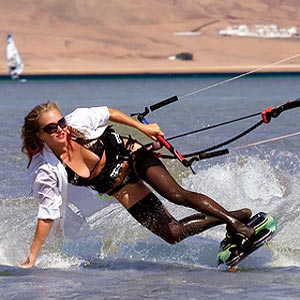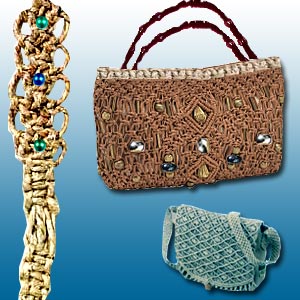Calligraphy

The term 'Calligraphy' is derived from the Greek word 'Kallos' meaning beauty and 'graphe' meaning writing. Calligraphy is a fine art of skilled penmanship, elegant writing at its best. It was calligraphy that was used to write books and manuscripts on parchment and vellum years before the Gutenberg printing press was invented. In present times Calligraphy is hobby for some and a lucrative business for others.
Calligraphic fonts are ideal for designing personal invitations and announcements. The calligraphic fonts are also used to set small poems and proverbs. Calligraphy spans a wide variety of moods, from warm to effusive and personal. Read on to learn more about Chinese calligraphy, Arabic calligraphy and Japanese calligraphy. Find out how modern calligraphy services can be used.
Calligraphy art
The relevance of calligraphy lies in the human need for expression through symbols, mark making, designing, drawing, painting, crafting and such others. As an art form, calligraphy has been studied for over three thousand years. Although characters are historically disciplined, fluidity and spontaneity of letters are improvised at the moment of writing. The expressive brush strokes reveal the creative freedom of the calligraphy artist.
Knowledge of calligraphy throws light on Japanese, Chinese and Islamic cultures. Calligraphy is the right combination of skill and imagination of the artist who attempts to bring individualistic styles to the letters. While calligraphic work can be completed very soon, do not underestimate the skills and concentration involved. Calligraphy characters are written only once and there is no room for altering, touching up or additions afterwards.
Arabic calligraphy
Arabic calligraphy continues to thrive as a form of art even today among the Arab and Muslim world. This ancient and expressive art form has become more popular with the advent of electronic greeting cards and computer clip art. Arabic calligraphy has eighteen distinct letter shapes which vary slightly from one another depending on whether they are connected to another letter before or after them. Significantly there are no capital letters in the Arabic language.
Indeed calligraphy got its roots from the Arabic language which is a part of the Semitic branch of Afro-Asiatic languages. The Arabic letters are distinguished from one another mainly by use of dots and their location. Arabic Calligraphy has developed into styles much more complex than its original form. Those who practice Islamic calligraphy undergo years of training before becoming adept professionals. Islamic calligraphy can be seen on the walls of the Taj Mahal where many passages of the Quran are inscribed.
Chinese Calligraphy
Chinese calligraphy also known as Brush calligraphy is a fine example of an abstract and sublime form of art. In Chinese calligraphy the strokes are drawn one after the other, as per the square 'Kaisho' style of writing kanji. In Chinese calligraphy, the artist is able to produce infinite variety of styles and forms by controlling the concentration of ink, flexibility of brush and thickness and absorptivity of paper.
Western Calligraphy
In sharp contrast to Chinese calligraphy, Western calligraphy uses diffusing ink blots and dry brush strokes. Western calligraphy is based on the homogeneity and uniformity of characters, much like they appear in fonts. But it does bear the influence of Chinese calligraphy. Western calligraphy is a relaxing yet highly disciplined exercise for one's physical and spiritual well being. It is interesting to see that historically such calligraphy artists were well known for their longevity in life.
Japanese Calligraphy
Japanese calligraphy or 'shodo' style of writing is an essential part of Asian heritage. Many schools in Japan conduct a calligraphic competition of writing big characters during beginning of a new school year which is ceremoniously held. The Wang Xi Zhi (after the famous Chinese calligrapher) prize for the best calligraphy artist is held each year. Typically Japanese calligraphy kit includes:
- Black soft mat 'shitajiki' that provides a comfortable soft surface.
- 'Bunchin' a metal stick to weight down the paper during writing
- 'Hanshi' a special thin calligraphy paper
- 'Fude' brushes, one larger brush for writing main characters and smaller one for writing the artist's name
- 'Suzuri' a heavy black container for ink
- 'Sumi' a solid black material that is rubbed in water to produce the black ink which is used for calligraphic writing.
Unlike Roman calligraphy, the strokes of Japanese characters are drawn in correct order and not arbitrarily. In Japanese calligraphy there are two faster styles of writing and everything is written in just a few strokes. The two styles are called semi cursive 'Gyosho' and cursive 'Sosho' styles.
Calligraphy tools
The two most important Calligraphy tools are paper and pen. The basic calligraphy set consists of materials needed for ink drawing or calligraphy work. Most often it includes four brushes, an ink stick, ink grinding stone, water dish and spoon, brush rest big enough for two brushes, a soap stone chop stamps, red chop ink and a porcelain dish along with water and paper.
It is important to keep the calligraphic pen clean. Although commercial reservoir pens can be stored with the cap on without drying out, they also need cleaning from time to time. Dip pens should also be cleaned after each use. The best and easy way to clean Calligraphy pens is by simply rinsing them in running water, hot or warm but never boiling. To remove dried ink, add ammonia to the water which helps clean the stubborn deposits.
Modern Calligraphy
There are several computerized calligraphic options that allow you to reproduce the lettering styles of Western calligraphy fonts like 'Rustic, Carolingian or Blackletter' among others with absolute ease. Instead of quill and ink as used in traditional calligraphy, fonts are reproduced by the click of a mouse. Chinese and Arabic calligraphic fonts tend to use a brush instead of a pen or nib and there are tool options and functions that provide this effect too.
These Calligraphy tools and options enable certain techniques which would not be possible with the traditional ink and pen. By using the 'undo' command an artist can rectify any mistake and reproduce with the least effort. This is a distinct advantage as in traditional calligraphy if a mistake was made the entire page got ruined.
Nowadays there are several e-learning courses in calligraphy that are available over the Internet that provide an opportunity to learn the fundamental principles of the beautiful art of calligraphy writing. A calligraphic enthusiast can start from the beginning and progress through to proficient penmanship with the help and guidance from the tutor online.
Calligraphic services
Calligraphy services can be used for wedding cards, event invitations, font typographies; original hand lettered logo designs, religious arts, announcements, graphic designs and commissioned calligraphic arts. Use of calligraphy can be seen in memorial documents, props and moving images for films and television productions, testimonials, birth and death certificates, maps and other works that involve writing. Functional hand lettered inscriptions to designs in fine art pieces are expressions of calligraphy. Calligraphy also influences book design, manuscript books, book binding, typeface design, sign making and handwriting.
Calligraphy is a timeless art that age cannot wither. The number of digital typefaces that emulate the characteristics of hand wrought letter forms shows the potential and relevance of calligraphy even today. The stress on cursive aspects and stylistic details are inspirations that every artist draws from this antique art form. Even in this digital age the humanistic touch of an expressive hand is very much sought after.
Top of the Page: Calligraphy
Tags:#calligraphy #Chinese calligraphy #alphabet calligraphy #Arabic calligraphy #Japanese calligraphy #calligraphy font #Islamic calligraphy #calligraphy pen #calligraphy art #calligraphy services

Women Recreation Guide
Kitesurfing Gear
Wire Jewelry Making
Christmas Craft Project
Clay Pottery
Quilting Fabric
Importance of Hobby
Hobby Interest
Silk Painting
Doodling Interpretation
Calligraphy
Sudoku Tips
Coin Collecting
Scrapbooking Idea
Ikebana
Hobby and Craft
Valentine Day Crafts
Bead Craft
More on Hobby

How to Macrame
Origami Flower
Collectible Hobby
Stamp Collecting
Snorkeling
Hobby Photography
Thanksgiving Craft
Digital Photography Tip
Top of the Page: Calligraphy
Popularity Index: 102,075

